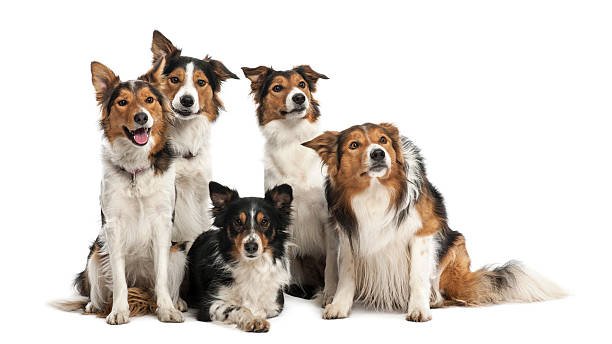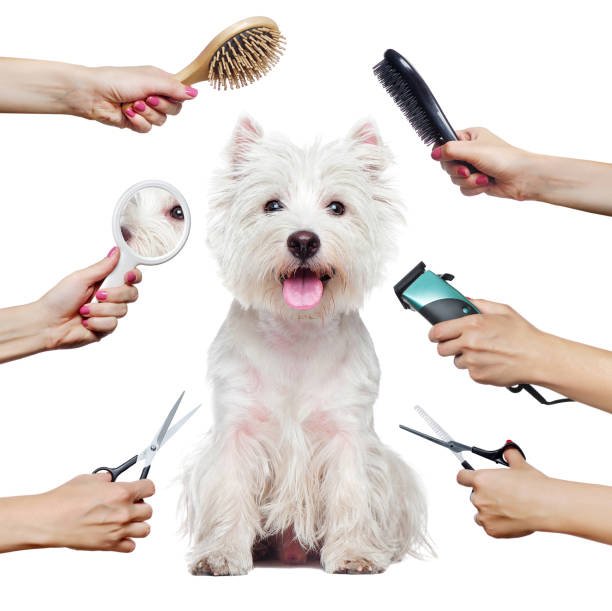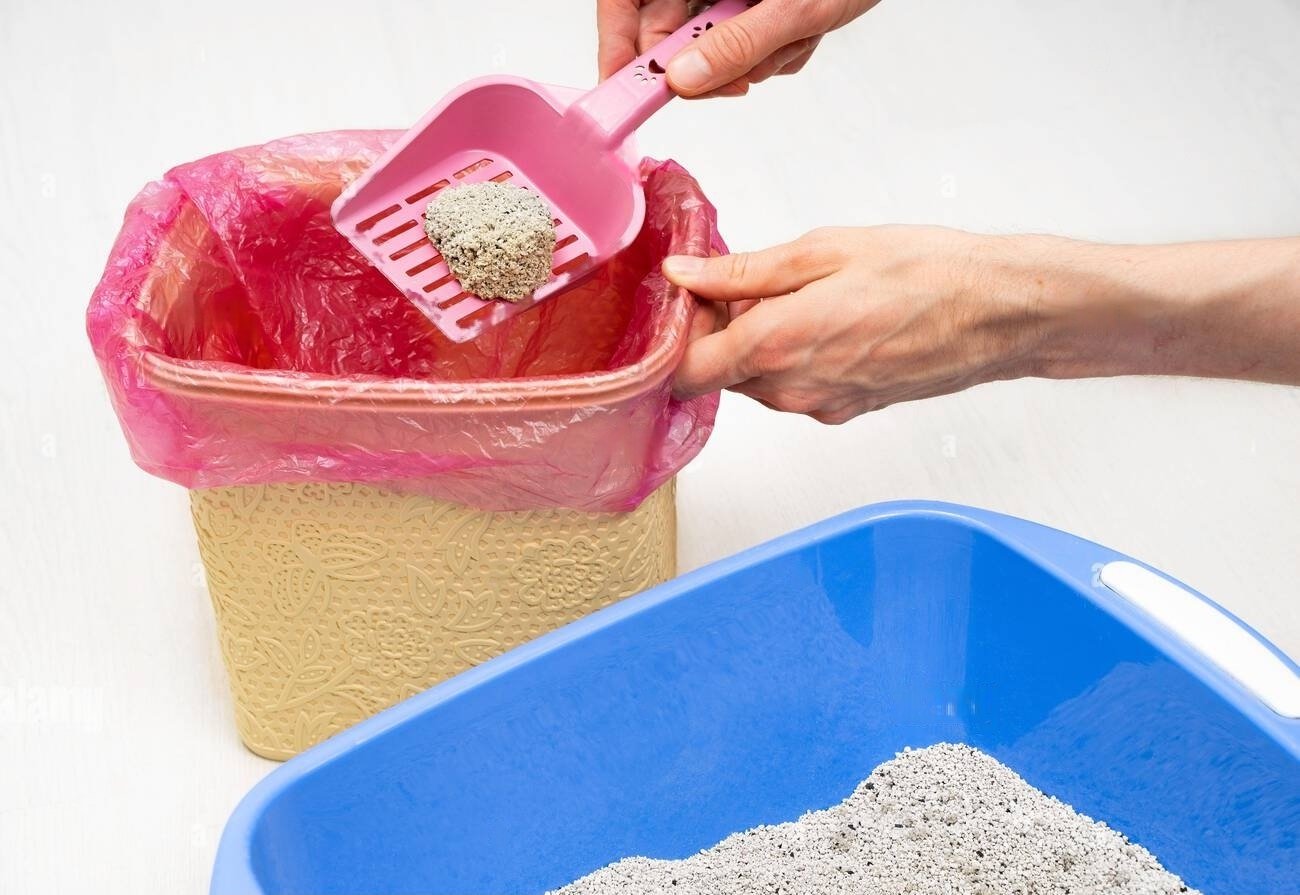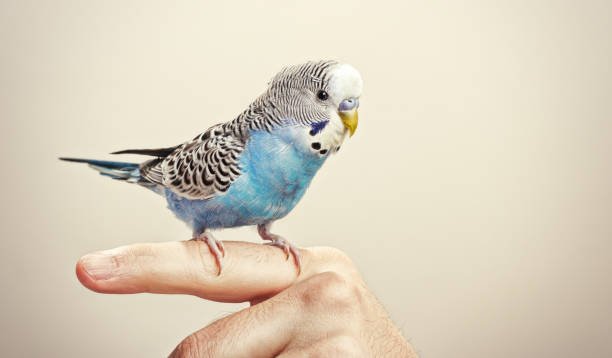Shy dogs are often timid, nervous, or fearful in new situations or around unfamiliar people and animals. They may avoid interaction, hide, or react to loud noises or sudden movements with fear. This shyness can result from a lack of early socialization, past trauma, or genetics. When you bring home a shy dog, you might notice them hiding, avoiding eye contact, and trembling at sounds, which can be concerning. These dogs, though affectionate, struggle to feel secure in their environment. This article will show you how to socialize a shy dog using simple steps to build their confidence and change their behavior. By the end, you’ll have the tools to help your dog become more relaxed and outgoing. It’s important to distinguish between shyness and fear aggression: while shy dogs tend to withdraw from new situations, dogs with fear aggression may react defensively. Understanding this difference is key to effective socialization. Socializing a timid dog is crucial for their well-being, helping them feel more comfortable and preventing behavioral issues. With the right approach, your dog can learn to enjoy new experiences, leading to a happier and healthier life.
The First Step in Socialization
Identifying the Root Causes of Shyness in Dogs
Shyness in dogs can stem from several factors. Genetics play a role; some dogs are naturally more timid due to their breed or lineage. A significant factor is insufficient early socialization. Puppies that don’t have positive experiences with different people, animals, and environments during their critical developmental period might grow up to be more fearful. Traumatic experiences, such as abuse or negative encounters with other animals, can also contribute to a dog’s shyness. Additionally, health issues can affect a dog’s behavior; for instance, pain or discomfort might make a dog more reserved and less likely to engage.
Signs Your Dog Might Be Shy or Fearful
Recognizing the signs of shyness in dogs is crucial for effective socialization. Shy dogs may avoid direct eye contact, often looking away or lowering their gaze. Trembling, hiding, or cowering are common behaviors when they feel threatened or unsure. Excessive barking or whining may indicate that a dog is feeling anxious or scared.By observing these behaviors, you can better understand your dog’s comfort levels and address their needs appropriately.
What They’re Really Feeling
To truly connect with and help a shy dog, it’s important to understand their emotional state. Imagine your dog as a child in a new school—they might feel overwhelmed, anxious, and out of place. Shy dogs experience similar emotions; they may feel insecure and frightened by new situations, even if there’s no immediate threat. Using storytelling, picture your dog in a room full of new experiences—each sound, sight, and smell can be a source of stress. This empathy helps owners approach their shy dogs with patience and understanding, providing the support they need to overcome their fears.
 Preparing for Success: Setting Up the Right Environment for Socialization
Preparing for Success: Setting Up the Right Environment for Socialization
Creating a Safe Space
Creating a safe and stress-free environment at home is crucial for helping a shy dog feel secure. Start by setting up a quiet, comfortable space where your dog can retreat when they feel overwhelmed. This could be a cozy bed or crate in a low-traffic area of your home. Make sure this space is free from loud noises and sudden disruptions. Providing toys and treats in this area can make it a positive place for your dog. The goal is to ensure your dog has a safe haven where they can relax and gradually build their confidence.
Understanding Your Dog’s Body Language
Being able to interpret your dog’s body language is essential for successful socialization. Many high-authority sites miss the subtle signs that indicate stress or comfort. Observe your dog’s posture, tail position, and facial expressions. For example, a dog that tucks its tail or flattens its ears might be feeling scared. Conversely, a relaxed posture with a wagging tail usually indicates comfort. Observing these cues helps you gauge how your dog is responding to different situations and adjust your approach accordingly.
Establishing a Daily Routine: Why Consistency Matters
A predictable daily routine helps a shy dog feel more secure and comfortable. Establish consistent feeding times, walks, and play sessions. This routine creates a sense of stability and helps your dog understand what to expect each day. Consistency in daily activities also makes new experiences less intimidating, as your dog knows there is a structure to their day. A stable routine can reduce anxiety and make your dog more open to engaging in socialization efforts.
Step-by-Step Guide to Socializing a Shy Dog
Introducing New Experiences Gradually
Introducing new experiences gradually is essential for a shy dog. Begin by exposing your dog to new people, animals, and environments in small, manageable steps. For example, if introducing your dog to other dogs, start with calm, well-socialized pets and keep the interactions brief. Slowly extend the length and complexity of these interactions as your dog grows more at ease. This slow approach prevents overwhelming your dog and helps build their confidence over time.
The Power of Positive Reinforcement: Encouraging Desired Behaviors
Positive reinforcement is a powerful tool for encouraging desired behaviors in a shy dog. Use treats, praise, and play to reward your dog for small achievements. For instance, if your dog approaches a new person or interacts calmly with another animal, immediately reward them with a treat or enthusiastic praise. This method reinforces positive behavior and helps your dog associate new experiences with positive outcomes. Many top websites overlook the importance of frequent, small rewards to maintain motivation and build confidence.
Controlled Exposure: How to Manage Stressful Situations
Controlled exposure involves carefully managing your dog’s interactions with potential stressors. Start by exposing your dog to mildly stressful situations in a controlled manner, such as visiting a less crowded park or meeting one new person at a time. Keep these experiences short and positive, and provide plenty of reassurance and treats. Gradually increase the level of exposure as your dog shows more confidence. This technique ensures that your dog remains comfortable and avoids becoming overwhelmed.
Socialization Beyond the Basics: Introducing Varied Experiences
To fully socialize your shy dog, it’s important to introduce them to a variety of experiences beyond the basics. Take your dog to different environments, such as parks, beaches, or dog-friendly stores, to help them adapt to various settings. Engaging in activities like playdates with other dogs or participating in dog sports can also be beneficial. These diverse experiences help your dog become more adaptable and confident in a range of situations. High-authority sites often miss the value of varied experiences in socialization, focusing mainly on basic interactions.
Recognizing Progress and Addressing Setbacks
How to Measure Progress: Small Wins and Big Milestones
Recognizing and celebrating progress is crucial when working with a shy dog. Start by identifying small wins, such as your dog approaching a new person or remaining calm in a previously stressful situation. These incremental achievements are important milestones in your dog’s journey towards confidence. Keep a progress journal to track these small successes and note any improvements in behavior. Celebrating these victories, even the small ones, helps reinforce positive behavior and keeps both you and your dog motivated. Often, high-authority sites don’t emphasize the importance of acknowledging small wins, focusing more on big changes.
Handling Setbacks: What to Do When Things Don’t Go as Planned
Setbacks are a normal part of socializing a shy dog and managing them effectively is key. If your dog regresses or shows signs of stress, it’s important to reassess and adjust your approach. Pull back from the situation causing discomfort and give your dog time to recover. Reintroduce socialization efforts slowly, starting from a less challenging point. Many top sites overlook the need for a flexible approach to setbacks. Understanding when to ease up and how to reintroduce new experiences gently can make a significant difference in your dog’s progress.
 The Role of Patience and Persistence: Why Time Is Your Best Ally
The Role of Patience and Persistence: Why Time Is Your Best Ally
Patience and persistence are essential when socializing a shy dog. Progress can be slow, and it’s important to remain consistent and patient. For example, a dog that initially shows fear at the sight of a new person may eventually become comfortable with repeated, positive interactions over time. Real-life stories often illustrate how owners who persisted through setbacks and continued their efforts saw their shy dogs transform into more confident companions. Many high-authority sites might not fully capture the time and dedication required, focusing instead on quick fixes. Consistency and a long-term commitment are crucial for achieving lasting results.
Common Mistakes to Avoid When Socializing a Shy Dog
Rushing the Process: Why Slow and Steady Wins the Race
One of the most common mistakes in socializing a shy dog is rushing the process. Forcing your dog into new experiences too quickly can increase their anxiety and fear. It’s crucial to introduce new people, animals, and environments gradually and at a pace your dog can handle. When overwhelmed, a shy dog may become more fearful and resistant to socialization efforts. Instead, focus on small, manageable steps and gradually build up to more challenging situations. Many high-authority sites underemphasize this gradual approach, which is vital for a successful socialization journey.
Ignoring Your Dog’s Comfort Zones: Respecting Boundaries
Respecting a shy dog’s comfort zone is essential for effective socialization. Each dog has their own boundaries, and ignoring these can lead to setbacks. Pay attention to your dog’s body language and recognize when they are uncomfortable or stressed. Avoid pushing them beyond their limits and instead work within their comfort zones to build confidence gradually. This approach ensures that socialization experiences are positive and supportive. High-authority sources often overlook the importance of respecting these boundaries, focusing more on general socialization techniques.
Overlooking the Need for Professional Help: When to Seek Expert Advice
Sometimes, socializing a shy dog may require expert intervention. If you notice that your dog’s fear and anxiety are not improving with your efforts, it may be time to seek help from a dog behaviorist or trainer. These professionals can provide tailored strategies and support to address specific issues. Early intervention with a professional can prevent long-term behavioral problems and accelerate progress. Many articles and sites do not fully discuss the role of professional help, often leaving out when and how to seek expert advice effectively.
Advanced Techniques for Socializing a Shy Dog
Using Desensitization and Counterconditioning Techniques
Desensitization and counterconditioning are advanced techniques that can help a shy dog become more comfortable with things that make them anxious. Desensitization means slowly introducing your dog to a trigger at a low intensity that they can handle without becoming scared. For instance, if your dog is scared of new people, start by having people at a distance where your dog feels safe, and slowly decrease the distance over time. Counterconditioning pairs this exposure with something positive, like treats or playtime, to change your dog’s emotional response to the trigger. This method helps your dog build a positive association with what once scared them, making them more confident in these situations. Many high-authority sources may not delve deeply into these techniques, missing their potential effectiveness in changing a dog’s emotional response.
Incorporating Play and Exercise: Tools for Building Confidence
Structured play and regular exercise are powerful tools for building a shy dog’s confidence. Engaging in activities like fetch, agility training, or even interactive toys can help your dog develop a positive attitude toward new experiences. Exercise not only burns off excess energy that might contribute to anxiety but also provides opportunities for your dog to experience new things in a controlled manner. Play sessions can serve as a reward for brave behavior, reinforcing positive experiences. Regular exercise and play can significantly reduce shyness by increasing your dog’s overall confidence and comfort in various situations. High-authority sites may overlook the specific role of structured play in socialization, focusing more on basic behavioral techniques.
Leveraging the Power of Scent and Sound: Non-Visual Socialization
Scent and sound can be effective tools in socializing a shy dog, especially when visual stimuli are overwhelming. Introducing new scents through items like essential oils or scented toys can help your dog become accustomed to new environments in a less intimidating way. Similarly, gradually playing soothing or neutral sounds, such as nature sounds or calming music, can help your dog adjust to new auditory experiences. These non-visual methods can be particularly useful for dogs that are sensitive to visual stimuli but are receptive to other sensory inputs. Many high-authority sites might miss the benefits of these techniques, focusing primarily on visual and direct socialization methods.
Real-Life Success Stories: Inspiration for Socializing Your Shy Dog
Case Study 1
Meet Luna, a shy rescue pup who was initially terrified of new people and experiences. When Luna first came to her new home, she would cower at the slightest sound and avoid eye contact with everyone. Her owner, Sarah, was committed to helping Luna overcome her fears. Sarah started by creating a safe and quiet space for Luna, gradually introducing her to new experiences at a slow pace. Using desensitization techniques, Sarah exposed Luna to new people and situations very slowly, always rewarding her with treats and praise for brave behavior.
Over time, Luna began to approach visitors on her own and started enjoying walks in the park. The key to Luna’s transformation was patience and consistency in her training. Sarah celebrated every small milestone, from Luna’s first wag of the tail to her first happy play session with other dogs. Today, Luna is a confident and happy dog who loves meeting new people and exploring new places. This story demonstrates that with the right approach and consistent effort, even the shyest dog can become a confident companion.
Case Study 2
Buddy, a border collie mix, was an extreme case of shyness, displaying severe anxiety around any new person or environment. His owner, Alex, tried various methods but found limited success. Recognizing the need for expert help, Alex sought out a professional dog behaviorist. The behaviorist conducted a thorough assessment of Buddy’s triggers and created a tailored socialization plan.
The plan included a combination of desensitization, counterconditioning, and gradual exposure to new experiences. The behaviorist also provided Alex with detailed guidance on reading Buddy’s body language and managing his stress levels effectively. With the professional’s support, Alex was able to implement the techniques correctly, leading to significant improvements in Buddy’s behavior.
Buddy’s transformation was remarkable. He went from a dog who would hide under the bed at the sight of visitors to one who eagerly greeted guests and enjoyed regular outings. This case highlights the importance of seeking professional help when necessary and illustrates how expert intervention can make a profound difference in overcoming extreme shyness.
Building a Lasting Bond: How Socialization Strengthens the Dog-Owner Relationship
Socializing a shy dog brings numerous benefits that go beyond just improving their behavior. As you work on socializing your shy dog, you build a deeper, more trusting relationship with them. Through consistent and patient efforts, you help your dog feel more secure and confident in their world. This process strengthens the bond between you and your dog, as they learn to trust you and feel more comfortable in various situations. The joy of seeing your shy dog transform into a confident, happy companion is a reward that enriches both of your lives. Socialization not only enhances your dog’s well-being but also creates a stronger, more meaningful connection with you, the owner.
Final Thoughts
Starting the journey of socializing a shy dog can be both challenging and rewarding. Remember, each dog’s progress is unique, and it’s important to be patient and persistent. Celebrate the small victories and recognize that setbacks are a normal part of the journey. With dedication and the right approach, your shy dog will gradually become more confident and comfortable. Keep in mind that your efforts are laying the foundation for a happier and healthier life together. Stay encouraged and focused, knowing that every step forward, no matter how small, is a sign of success in your socialization journey.


















 Preparing for Success: Setting Up the Right Environment for Socialization
Preparing for Success: Setting Up the Right Environment for Socialization The Role of Patience and Persistence: Why Time Is Your Best Ally
The Role of Patience and Persistence: Why Time Is Your Best Ally


